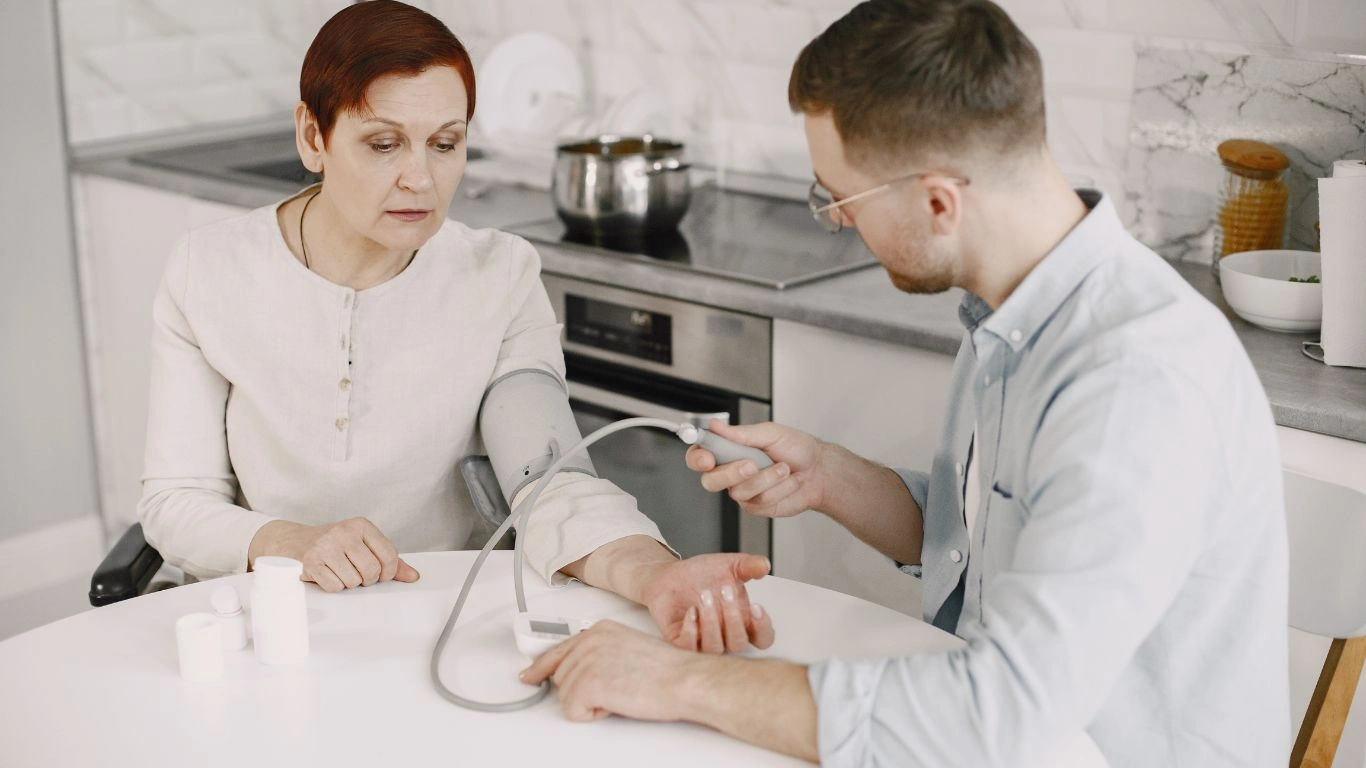Stress-Relief Toys That Actually Help Hypertension—Surprising Truth!
Can stress-relief toys help with hypertension? As a hypertension specialist, I get this question all the time! Managing high blood pressure isn’t just about medication and diet—stress plays a huge role too. And let’s be real, we all deal with stress. Whether it’s work, family, or just daily life, those stress levels can creep up and take a toll on our health. That’s where stress-relief toys come in. You’ve probably seen them—fidget spinners, stress balls, and even those satisfying pop-it toys. But do they actually help lower blood pressure? Or are they just fun distractions? Let’s dive in!
Understanding the Link Between Stress and Hypertension

Before we talk about stress-relief toys, let’s break down the connection between stress and high blood pressure. Stress triggers a fight-or-flight response, releasing cortisol and adrenaline—those famous stress hormones. This makes your heart beat faster, constricts your blood vessels, and raises your blood pressure. Over time, chronic stress can contribute to long-term hypertension, increasing your risk of heart disease and stroke.
Now, I’m not saying stress alone causes high blood pressure, but it sure doesn’t help. If you’re already dealing with hypertension, keeping your stress levels in check is a crucial part of managing it. That’s why relaxation techniques, mindfulness, and yes, even stress-relief toys, can play a role in your blood pressure control strategy.
How Do Stress-Relief Toys Work?

Alright, let’s talk toys! Stress-relief gadgets work by engaging your senses—touch, sight, and even sound—to redirect your focus and help you relax. But how exactly does that help with hypertension?
They Provide a Physical Outlet for Stress
Ever notice how squeezing a stress ball can feel so satisfying? That’s because it physically releases tension. Your body naturally tenses up when you’re stressed, and giving your hands something to do can help dissipate that nervous energy. It’s a bit like the hand version of taking deep breaths—it signals your brain to chill out.
They Help Shift Your Focus
One of the biggest benefits of stress toys is that they give your brain a break. Whether it’s fidgeting with a cube, rolling a marble in your fingers, or clicking a pen, these repetitive motions create a sense of rhythm and predictability that can be surprisingly soothing. As someone who’s had countless patients struggle with stress management, I always tell them—sometimes, the smallest distractions can make the biggest difference.
They Can Promote Mindfulness
Stress toys aren’t just mindless fidgeting—they can also encourage mindfulness. When you focus on the sensation of a smooth stone in your hand or the soft squish of a foam ball, you’re bringing your attention to the present moment. And mindfulness is a proven way to lower stress, which in turn can help keep blood pressure in check.
Best Types of Stress-Relief Toys for Hypertension

Not all stress toys are created equal. Some work better than others when it comes to actually promoting relaxation. Here are a few that I personally recommend to my patients:
- Stress balls: A classic for a reason! Squeezing them helps relieve muscle tension and promote relaxation.
- Fidget spinners: These aren’t just for kids—watching the smooth spinning motion can be hypnotically calming.
- Pop-it toys: The repetitive popping action can be oddly satisfying and helps refocus your mind.
- Worry stones: Rubbing a smooth stone between your fingers can be a great tactile stress reliever.
- Acupressure rings: These stimulate pressure points in your fingers, which may help relax your body.
Each of these tools has its own way of engaging your senses and helping you de-stress. But do they actually lower blood pressure? That’s what we’ll explore next!
Do Stress-Relief Toys Actually Lower Blood Pressure?

Alright, let’s get to the real question—can stress-relief toys actually lower blood pressure, or are they just feel-good gimmicks? Based on my experience as a hypertension specialist, I’d say they aren’t a magic bullet, but they can play a role in managing stress-related spikes in blood pressure.
Here’s the deal: stress-relief toys help by reducing the physiological and psychological effects of stress. Remember how we talked about the fight-or-flight response? When you engage in calming activities, like fidgeting with a stress ball or rolling a worry stone, your brain gets the signal to relax. Your heart rate slows down, your blood vessels relax, and your blood pressure naturally follows suit.
What Does Science Say?
Research on stress-relief toys specifically is still emerging, but studies on stress reduction and blood pressure are pretty clear. Activities that promote relaxation—like deep breathing, mindfulness, and repetitive motions—are known to lower blood pressure over time. Since many stress toys encourage these behaviors, they could be a useful tool in your hypertension management plan.
Some studies have also shown that hand-grip exercises (which stress balls can mimic) may help reduce systolic blood pressure. The American Heart Association has even recognized isometric hand exercises as beneficial for blood pressure control. So, while a simple stress ball won’t replace medication or lifestyle changes, it’s definitely not just a gimmick.
How to Use Stress-Relief Toys Effectively

Now, just owning a stress ball won’t magically lower your blood pressure. (I wish it were that easy!) The key is using these tools in a way that actively reduces stress. Here are some tips to make the most of your stress-relief toys:
Pair Them with Deep Breathing
Try squeezing a stress ball or using a fidget toy while practicing slow, deep breathing. Inhale for four counts, hold for four counts, then exhale for six counts. This combination helps your nervous system shift from fight-or-flight mode to a relaxed state.
Use Them During High-Stress Moments
Keep stress toys handy for moments when you feel tension building—like during a tough work meeting, while stuck in traffic, or before a doctor’s appointment. These small distractions can help prevent a full-blown stress response.
Make It a Habit
Consistency is key. Using stress-relief toys once won’t have a major impact, but incorporating them into your daily routine can help train your body to manage stress more effectively. Try setting aside five minutes a day to engage with your favorite stress toy.
Combine with Other Relaxation Techniques
For the best results, use stress-relief toys alongside other healthy habits like meditation, exercise, and good sleep. They work best as part of a holistic stress-management approach rather than a standalone solution.
Who Can Benefit the Most from Stress-Relief Toys?
Honestly? Almost anyone dealing with stress, anxiety, or high blood pressure could see some benefits. But certain groups might find them especially helpful:
- People with hypertension: If your blood pressure spikes due to stress, keeping a stress toy handy might help you stay calm.
- Office workers: Long hours at a desk can be mentally draining. A fidget cube or stress ball can help break up the tension.
- People with anxiety: Fidgeting can be a great coping mechanism for anxiety, helping to ground you in the present moment.
- Students and kids: Stress toys can improve focus and reduce nervous energy in school or study environments.
- Anyone who fidgets: If you’re someone who constantly taps your foot or clicks your pen, using a designated stress toy can help channel that energy more productively.
Stress-relief toys aren’t just trendy gadgets—they can be genuinely useful tools for stress and blood pressure management. The key is using them strategically, rather than expecting instant results. Next, let’s explore some expert-backed strategies to maximize their impact.
Case Studies & Real-Life Examples

Let’s take a look at how stress-relief toys have actually helped real people manage their hypertension. These aren’t just theories—I’ve had plenty of patients and colleagues share their experiences. And trust me, some of the results might surprise you.
Case Study 1: The Busy Executive Who Found Calm in a Stress Ball
Meet Jason, a 45-year-old marketing executive. His job is fast-paced, demanding, and full of high-pressure deadlines. After a routine check-up revealed his blood pressure was creeping into the danger zone, his doctor (that’s me!) recommended a mix of lifestyle changes—including stress management techniques.
At first, he was skeptical. But after integrating a simple stress ball into his daily routine—using it during meetings, calls, and brainstorming sessions—he noticed a significant reduction in his stress levels. Over time, this helped his overall blood pressure readings improve.
Case Study 2: The Retired Teacher Who Found Comfort in Fidget Toys
Susan, a retired teacher, had struggled with anxiety-induced hypertension for years. Traditional relaxation techniques like meditation didn’t work for her—she found them frustrating instead of calming. But when she started using a fidget cube while watching TV or reading, she discovered that the small, repetitive motions helped her feel grounded. Over time, her blood pressure spikes became less frequent.
These cases prove that small changes can lead to big results. While stress-relief toys aren’t a cure-all, they can be an effective tool in a well-rounded blood pressure management plan.
Key Takeaways: What You Need to Remember
We’ve covered a lot, so let’s break it down into the key points you should remember:
- Stress plays a major role in hypertension. Managing stress is just as important as diet and exercise when it comes to keeping blood pressure in check.
- Stress-relief toys work by engaging the senses. They help redirect nervous energy, promote mindfulness, and reduce tension.
- Scientific evidence suggests they can help. While more research is needed, stress toys encourage relaxation techniques that are proven to lower blood pressure.
- They work best when combined with other strategies. Use them alongside deep breathing, exercise, and mindfulness for maximum effect.
FAQs
Can stress-relief toys replace medication for hypertension?
No, stress-relief toys are not a replacement for medication or other medical treatments. However, they can be a useful complement to an overall hypertension management plan.
How often should I use stress-relief toys?
There’s no strict rule, but using them consistently—especially during high-stress moments—can help reinforce relaxation techniques and prevent blood pressure spikes.
Which stress-relief toy is the best for lowering blood pressure?
It depends on personal preference. Stress balls, fidget cubes, and worry stones are all great options. The key is finding what works best for you and sticking with it.
Bonus: Additional Resources or DIY Tips
If you want to take your stress relief game to the next level, here are some additional tips:
- DIY Stress Ball: Fill a balloon with rice or flour to create your own custom stress-relief tool.
- Guided Meditation Apps: Apps like Calm and Headspace can help you practice mindfulness alongside using stress-relief toys.
- Breathing Exercises: Pair your stress toy with deep breathing for a double relaxation effect.
Appendix: References, Disclaimer, and Call to Action
References:
- American Heart Association: Managing Hypertension
- Mayo Clinic: Stress and High Blood Pressure
- National Institutes of Health: Stress Reduction and Hypertension
Disclaimer: This article is for informational purposes only and should not be taken as medical advice. Always consult a healthcare professional for personalized recommendations.
Call to Action: Have you tried stress-relief toys for hypertension? Share your experience in the comments below! And if you found this article helpful, don’t forget to share it with someone who could benefit.

Dr. Gwenna Aazee is a board-certified Internal Medicine Physician with a special focus on hypertension management, chronic disease prevention, and patient education. With years of experience in both clinical practice and medical writing, she’s passionate about turning evidence-based medicine into accessible, actionable advice. Through her work at Healthusias.com, Dr. Aazee empowers readers to take charge of their health with confidence and clarity. Off the clock, she enjoys deep dives into nutrition research, long walks with her rescue pup, and simplifying medical jargon one article at a time.






